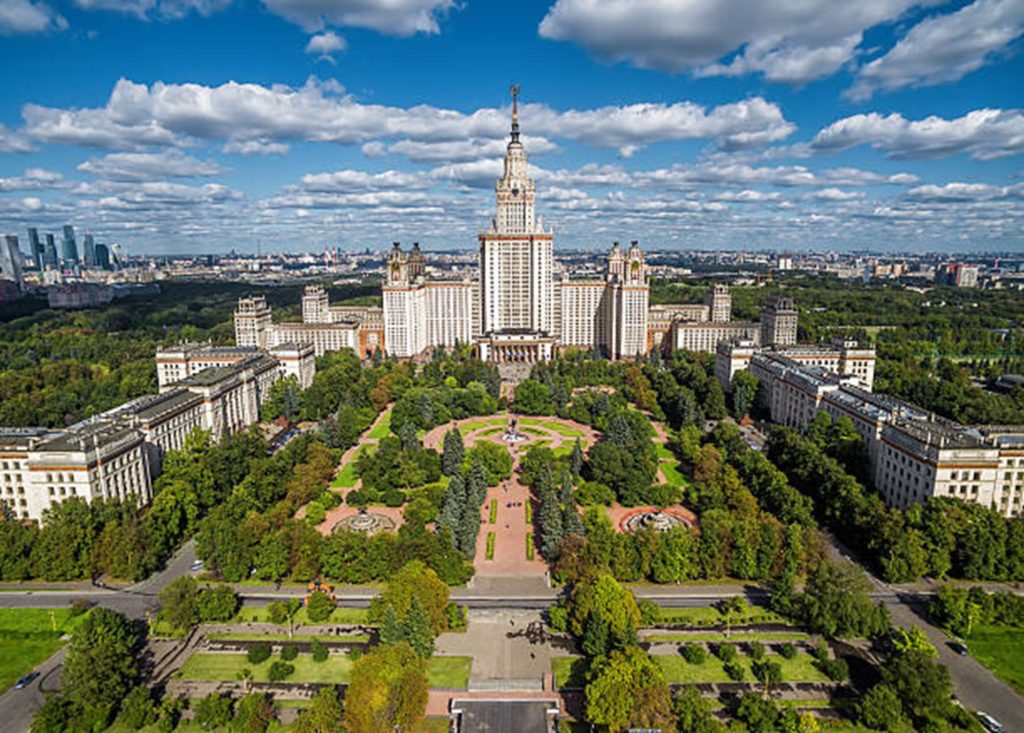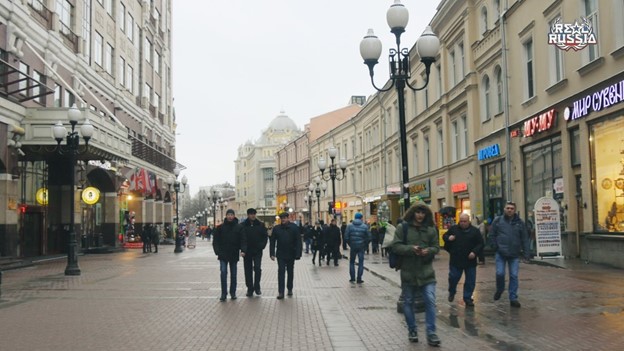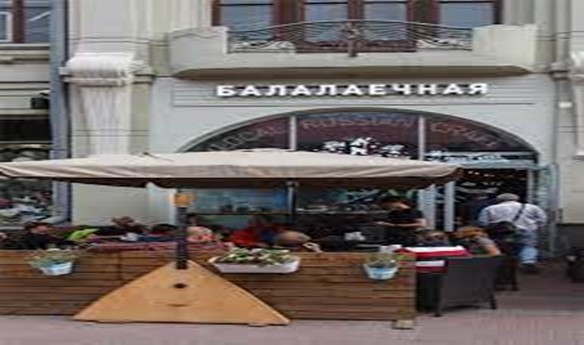

Author: Kent Moors, Ph.D.
In the intelligence business, events do not always follow an expected path. Sometimes, you develop an unexpected personal connection with somebody on the other side. This is the subject of today’s Classified Intelligence Brief Spy Tale. It is the story of how I first met a fellow I called “Sergei.”
He was an officer in the KGB Second Chief Directorate (SCD), the branch in charge of intel and security within Russia (now called the FSB). My usual interchange had been with folks in the KGB First Chief Directorate (FCD, handling foreign intel and these days referred to as the SVR). But matters would change abruptly when one is inside the country.
I was about two months into my longest single period of living in Moscow. It was a Saturday in January and cold. Not particularly unusual. After all, tracing a finger west on a map from Moscow will put you in Hudson’s Bay, Canada. But there is a peculiar Russian element to local winter weather that sets it apart.
There is a foreboding feeling that it will never end.
As I noted in an earlier Spy Tale entry (“Setting the Stage in Moscow,” Classified Intelligence Brief #84, May 12, 2021), I spent some time in Moscow over several years. Today’s story takes place after I had been traveling there for a while, finally having moved into a small loft apartment and out of the hotel discussed in “Setting the Stage.”
My place was on ulitsa Akademika Chelomeya, about half-way between the institute of the Soviet Academy where I lectured and Lenin Hills (renamed Sparrow Hills in 1999, the location of Lomonosov Moscow State University overlooking the city).




As I wrote last month, there is an overriding personal reason to provide a portion of the Spy Tales series dubbed “Russian Diary:”
I want to introduce you to the stage on which a multiyear drama would play out – to provide you with what my life was like there in the initial years and some of the local texture. This is the Moscow I experienced in the middle of the Cold War. For a period spanning more than a decade I would live for extended periods in the Soviet capital, shuttling from my base in London.
Technically, I was serving as a foreign researcher/lecturer at an institute of the Soviet Academy of Sciences (AHCCCP). The posting had been developed over a period of some 18 months in the early 1980s, but it was not until mid-decade that I entered the USSR on a formal Academy invitation.
The Soviet Academy (and now its equivalent Russian version, the RAS) remains one of the great research systems in the world, divided into some two hundred subject specific institutes and centers. Most of these are in Moscow, although others are spread across the eleven time zones of the country.
I quickly became fascinated with Moscow and Russia. It remains the most interesting and paradoxical of the places I frequented during my career. That my primary intelligence responsibilities involved counterintelligence (CI) and the USSR was my focus hardly hurt either.
Moscow is where I came of age in the Great Game, tested my mettle (and stamina), and met my future wife.
Settling in, my weekends usually started with delivering a Saturday morning lecture at the institute followed by a quick Metro ride into the center city for some errands and lunch at a favorite bistro in the Old Arbat section.
As an aside, the word “bistro” is usually connected to a small Parisian café offering limited meal options and drinks. But it is also likely that the name was coined early in the twentieth century with Russian soldiers in the “City of Light” demanding their food “quick” (in Russian быстро, “bystro”). So, the term may actually have begun in Russia.
In any event, the Old Arbat section has been a gathering place for artists, poets, tourists looking for a bargain, and locals wanting to unwind for generations. In fact, located just west of the Kremlin and Red Square, it was originally the center of the city, had been in existence since at least the 1400s, and was the preferred residential area for nobility in the eighteenth century. For some time now it has been a main pedestrian walkway through the middle of town.
Arbat (the “Old” section, not the “New” portion that would later be populated with modern apartment buildings and nightclubs) was my favorite hangout to while away time and soak up the local ambiance.


There was also another reason why I choose to frequent a particular Old Arbat bistro. The Balalayehnaya was a favorite hangout of expats. It served a full line of Western beer along with comfort food, local craft ales, and even menus in English (the proprietor was a permanent resident from Manchester in the UK whose politics apparently did not mesh well with Whitehall in the latter 1970s). A few years later there would be a McDonald’s opening up close by. But the bistro would remain the favorite hangout. Until, that is, it was bombed in an apparent criminal gang war a little less than two decades ago. Several people died, all foreigners.


It is around the corner from here that I made a memorable decision that would take my personal associations in a new direction entirely.
On each occasion I had traveled to Moscow there was surveillance. That was typical, especially for Americans. It made no difference whether it was KBG FCD (foreign) or SCD (domestic) the first department of each covered Canada and the US. That meant, upon my arrival in country, SCD first department officers would pick me up at Sheremetyevo Airport and tail me for the time I was there.
However, once I was in my residence (in the early days that was the Academy’s hotel, Gostinitsa Akademicheskaya; thereafter at my apartment) normal day (8 to 8) surveillance was done by single individuals in 12-hour shifts. And they were always the same people. It got to the point that I could pick them out in any crowd. I gave them names. That is where “Sergei” came from, at least that is what I called him.
In tradecraft it is called a “soft cover.” I was in Moscow at their invitation, operating in an open academic post, using my real name. Now, I also had another function. But that was a single operation likely to spread over several years. Should it heat up, it would have to be handed over to a case officer working out of the CIA Station in the Embassy.
As a result, I did nothing that would flag me as a priority target. That was precisely what we wanted. Nonetheless, as I have noted before, everything I did in Moscow needed to be done very carefully. In an earlier Spy Tale (“Limiting the Flow of Illegals among the Butterflies of Niagara,” Classified Intelligence Brief, May 5, 2021). I wrote about my position in Russia as being:
[A] NOC (having “no official cover.”) That meant I had no embassy protection should the other side decide to arrest me.
On the other hand, I was there under my own name, occupying an open position at the request of the Soviet Academy, doing in other words what I was supposed to be doing (at least overtly).
My primary NOC assignment unfolded over several years, centered on one person, and had resulted from a multiyear exercise in planning. While there would be minor ancillary tasks shoveled my way, all conduct had to follow “Moscow Rules.”
These assumed that one was always under surveillance, being watched, being listened to, having all communications interdicted. For the officers at the embassy (those having official cover) this meant (as contrasted to the drivel from Hollywood) never conducting espionage personally. For that, you recruited Soviets or other foreign nationals in country to act as agents or assets.
Official cover guys and gals spent their time developing and managing networks of agents/assets, while fashioning indirect ways of communicating with them. Given the fishbowl environment in which one operated in such hostile environs, the “Rules” mandated no direct personal contact with any agent.
The “Rules” guaranteed that everything done in Moscow would take much longer than just about anyplace else. Having American intermediaries (businesspeople, tourists, reporters, academics, etc.) in town could provide some additional flexibility. But such individuals would have limited use since they were not trained and were likely under some sort of investigation from the time they went through customs at the airport. NOCs like me, therefore, were of more benefit. We were already living there.
But NOCS should never service existing agent networks or, worse still, initiate espionage. Either would be fatal to the assets involved and likely result in some prison time for the NOC. With one exception, I avoided a jail cell. That “adventure” is on a short list for approval and should be in an upcoming tale.
However, the primary reason for my structuring an elaborate legend (all quite true, by the way) was to exercise a separate standing operation, one what could only be exercised from the position I had secured at the Academy.
While all of this weighed somewhat heavily in the background, my visible actions conveyed those of a foreign academic sampling what Moscow could provide. After having been there so many times, my usual activities were quite predictable. That gave Sergei and the other fellows tailing me an easy job.
On this particular freezing Saturday, I decided to change the game a bit. I conducted my walk toward the Arbat bistro as usual but increased my walking speed each time I turned a corner. It is called “extending the gap” and it is the easiest way to create a buffer between you and surveillance if something has to be done quickly (like service a dead drop or leave a signal).
At each corner, the gap would become larger, forcing Sergei to increase his pace. Finally, he came around the next to last corner before the stretch containing Balalayehnaya and I was gone. He started running and made the last corner breathing hard.
There I was standing in the middle of a sidewalk, smiling profusely, and extending my hand. “Hello, my name is Kent. What’s yours?” He just about collapsed. Not answering, I continued, “That’s OK, I’ll just call you Sergei.”
I brought us out of the cold into the bistro and ordered him some chai (tea). He had a job to do, I told him, and I appreciated it. After all, here is this American academic who might need close in support should it go sideways on some ulitsa in Moscow.
Thereafter, we coordinated. He would tail me later some mornings, cut off for lunch with his wife when I was at the institute, collect me later, and still be able to pick up his daughters following their after-school activities. If there was to be some change in my daily schedule, I would let him know. The more major revisions – like travel within Russia, attendance at a social event, or an academic conference – would be handled directly through official channels from the institute.
What happened that frigid Saturday changed how I operated in Moscow. But it would also begin a friendship that would see me at the wedding of his older daughter, years later finding his younger daughter a good faculty advisor at the University of Michigan and sending off presents for holidays or birthdays (through a cutout). My wife Marina and I would be with his family at Sergei’s funeral in 2017.
And Sergei? He would move me out of Russia early during one of my trips to avoid a quid-pro-quo nasty arrest and detention. But overshadowing everything else, he literally saved Marina’s life during Moscow’s dark days of September-October 1993.
Both of these will be the subjects of upcoming “Russia Diary” installments in the CIB Spy Tale series.
Sergei RIP


This is an installment of Classified Intelligence Brief, your guide to what’s really happening behind the headlines… and how to profit from it. Dr. Kent Moors served the United States for 30 years as one of the most highly decorated intelligence operatives alive today (including THREE Presidential commendations).
After moving through the inner circles of royalty, oligarchs, billionaires, and the uber-rich, he discovered some of the most important secrets regarding finance, geo-politics, and business. As a result, he built one of the most impressive rolodexes in the world. His insights and network of contacts took him from a Vietnam veteran to becoming one of the globe’s most sought after consultants, with clients including six of the largest energy companies and the United States government.
Now, Dr. Moors is sharing his proprietary research every week… knowledge filtered through his decades as an internationally recognized professor and scholar, intelligence operative, business consultant, investor, and geo-political “troubleshooter.” This publication is designed to give you an insider’s view of what is really happening on the geo-political stage.
You can sign up for FREE to Classified Intelligence Brief and begin receiving insights from Dr. Moors and his team immediately.
Just click here – https://classifiedintelligencebrief.com/






